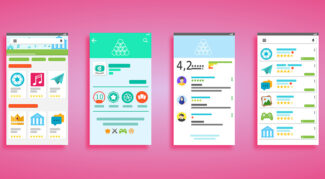5 tendencias que definen el futuro de las aplicaciones
A través del informe Phenomena, la experta en tráfico web y aplicaciones Sandvine ha identificado cuáles son las 5 tendencias que marcarán la evolución y funcionamiento de las aplicaciones a todos los niveles.
Según Sandvine, en la actualidad, la complejidad de las aplicaciones es el “mayor reto” a la hora de ofrecer experiencias de alta calidad. Conceptos como la calidad de servicio de las aplicaciones y la calidad de servicio de la red se entremezclan, lo que obligan a proveedores y desarrolladores en mejorar y optimizar los procesos de operaciones de red y de seguridad, al tiempo que se protege la privacidad. Estas claves condicionan las cinco principales tendencias que definen el futuro de estas aplicaciones.
 1. Un tsunami de vídeo
1. Un tsunami de vídeo
El vídeo a la carta, la transmisión en directo, el compartir contenido, videoconferencias, aplicaciones con soporte de vídeo y aplicaciones con vídeo integrado (por ejemplo, realidad aumentada/virtual realidad virtual y reconocimiento facial) marcarán el futuro de las aplicaciones. Hace unos años, las aplicaciones móviles se reducían principalmente a YouTube, pero ahora asistimos a una convivencia de YouTube, Netflix, Disney, Amazon Prime y aplicaciones de canales de televisión. También hay también más tráfico de vídeo ascendente debido a las videoconferencias, el intercambio social y la vigilancia de seguridad.
En la actualidad, el 53,72% del tráfico de internet lo acumulan las aplicaciones de vídeo, seguidas de lo social (12,69%), webs (9,86%), Gaming (5,67%) y mensajería (5,35%).
 2. Aplicaciones más grandes y más complejas
2. Aplicaciones más grandes y más complejas
Las aplicaciones son mucho más numerosas, están masificadas y son “más polimórficas, multiplexadas, ofuscadas y encriptadas que nunca” al incluir una miríada de funciones como vídeo incrustado, pagos o chats. La multiplexación dentro de los flujos individuales (por ejemplo, tener vídeo, chat y voz en un solo flujo) se utiliza cada vez más para latencia y mejorar el rendimiento. Esto ha provocado una “avalancha” de tráfico “desconocido” en algunas redes que tradicionalmente han confiado en técnicas más básicas para identificar el tráfico de aplicaciones.
 3. Protocolos de tráfico más eficientes
3. Protocolos de tráfico más eficientes
Cada vez se opta más por QUIC en lugar de Protocolo de Control de Transmisión (TCP) o HTTP/2 por parte de Google, Facebook y Apple para crear mejores experiencias para los clientes. Estos protocolos están provocando una “tormenta de tráfico” que está nublando los esfuerzos para clasificar las aplicaciones en uso. Al mismo tiempo, protocolos más antiguos como HTTP Live Streaming (HLS) maximizan la calidad del vídeo, pero crean problemas de latencia cuando son utilizados para la transmisión en directo.
 4. La nueva era del cifrado
4. La nueva era del cifrado
El nuevo servicio de protección de datos de Apple iCloud Private Relay, cifra el tráfico http. Esto puede causar problemas de incompatibilidad con la red incompatibilidad con la red y dificultar el analizar y gestionar la QoE de las aplicaciones.
 5. La fina línea entre ocio y trabajo
5. La fina línea entre ocio y trabajo
Aplicaciones cada vez más populares como Microsoft Teams and Zoom se utilizan para trabajar, enseñar y eventos sociales desde casa. Estas aplicaciones han aumentado el volumen de tráfico ascendente. El trabajo híbrido de trabajo híbridos presenta problemas únicos de seguridad que deben abordarse con medidas de ciberseguridad más consistentes para proteger los dispositivos y las redes.
Did you like this article?
Subscribe to us RSS feed And you will not miss anything.
















